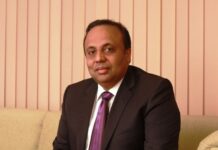New Delhi, October 10, 2018: The Prime Ministers’ Science, Technology and Innovation Advisory Council (STIAC) in its first meeting on Tuesday, in New Delhi, set some clear objectives and directions for a number of key projects. The panel will meet regularly to ensure adequate stimulus for technology innovation and entrepreneurship.
The panel was formulated by Prime Minister Narendra Modi to advice on science and technology innovation. It is currently headed by Dr. K Vijay Raghavan, Principal Scientific Adviser to the Government of India.
Other members of the council include Former ISRO chief A. S. Kiran Kumar; Professor Ajay Sood, Indian Institute of Science, Bengaluru; Professor Subhash Kak, Oklahoma State University; Professor Manjul Bharghava, noted mathematician from Princeton University; Major General Madhuri Kanitkar, the first woman dean from Pune’s Armed Forces Medical College, and industrialist Baba Kalyani. Secretaries of around 10 central ministries, including science and technology, energy and education were special invitees to the panel.
The day-long meeting included presentations on a range of topics, followed by discussions and directions for action. The formation and terms of reference for the council are a consequence of the fact that while the quality of the scientific efforts in the country are good, as a whole, the country is unable to move forward in terms of scientific and technological innovation.
To address this, the Prime Minister personally took several steps on assuming office. Post meeting a group of key scientists, a number of policy directions were pushed by the Prime-Minister’s Office’s for action by the relevant ministries.
Over the past two years, the Group of Secretaries in Science and Technology have both formulated and initiated implementation of major steps to improve technological innovation in the country. In April this year, the Prime Minister appointed a new Principal Scientific Adviser followed by the constitution of the Prime Minister’s STIAC. These concrete steps have resulted in the country’s science and technology eco-system coming together towards a cohesive direction.
“There is now a stated direction and efficiency in the system due to the increased government, industry and philanthropy investment along with quality leadership. India’s scientific enterprise can be made strong, collaborative, daring, purposeful and effective. India’s Science and Technology sector must become a shining example to the world, and will have a strong positive impact on our society and economy,” K Vijay Raghavan Principal Scientific Adviser to the Government of India said.
During Tuesday’s meeting, a number of key projects and their direction were discussed including – Accelerating Growth for New India innovation (AGNIi), Deep Ocean Mission, Teaching S&T in Indian languages, Artificial Intelligence (AI) and Quantum Computing, Bioscience Mission for Precision Health and Optimal Well-being, Waste to Energy, Research, Development and Innovation towards making India a leader in Electric Vehicles, Indian Biodiversity: characterisation, preservation and sustainable use.
All discussions and conclusions are being translated into clear action-points and will not be open-ended. The STIAC is scheduled to meet regularly and ensure that there is adequate stimulus to implement all the programs within a one-to-three year time period.
1. Building the foundations of science. It is vital that education and research be intertwined and nit separate efforts. This needs to happen at all levels of training and study. Support for science must ramp up through increased support from government, industry and philanthropy. Industry needs to increase its in-house support for research, substantially. Support for basic science and curiosity driven research is vital and will only grow, providing the ability to address complex problems and their solutions. Institutions and scientists must be increasing empowered to meet their goals. State governments and line-ministries must become active partners in using S&T in decision-making and implementation. Mechanisms to affect these will need constant facilitation, attention and policy interventions, which are being taken up.
2. AGNIi: Accelerating Growth for New India innovation. Over the past four years, the start-up and entrepreneurship eco-system has grown enormously. Now, a challenge is to take the many successes from here, and from our national laboratories and universities, and scale them for mass market consumption. This requires bridging the gap between potentially successful technologies and start-ups and their impact. To facilitate this, the Council was apprised of the launch of AGNIi (Accelerating Growth for New India innovation). Co-Chaired by the Cabinet Secretary and the Principal Scientific Adviser, AGNIi will help successful technologies with business and development advice in order to become national and global successes. AGNIi will link ideas and successes from rural areas and conversely, help appropriate technologies become commercially viable in rural areas.
3. Deep Ocean Mission: The purposes of this mission are to improve our understanding of the oceans around us, make India a pioneer in underwater technological fronts, provide information and services to maintain the strategic interest of India in the Indian Ocean region and provide information on the long term changes in the ocean due to climate change. The mission proposes to explore the Deep Ocean similar to the space exploration started by ISRO about 35 years ago. The usage of space technology for various activities in India has helped in shaping national life and development. This Mission, aspires to bring a similar revolution in the application of ocean science and technology to shape the national life and developmental activities of the country. (Ministry of Earth Sciences, Department of Biotechnology, Ministry of Environment and Forests).
4. Teaching S&T in Indian languages: This is a societal need being felt by a large number of people, and the technology for solving the need also exists. The technology would be deployed and used for actual translation with quality human assistance. At the same time, R&D would continue in improving the technology that reduces human intervention in each domain. (Ministry of Human Resource Development and Ministry of Electronics and Information Technology, Department of Science and Technology)
5. Artificial Intelligence (AI) and Quantum Computing: The NITI Aayog report on AI shows the way forward in all areas of AI including in S&T. The S&T thrust will be led through the missions in Supercomputing and Cyber PhysicalSystems. The detailed control of quantum mechanical systems with a large number of degrees of freedom is one of the great contemporary challenges in fundamental science and technology. By necessity this enterprise is deeply intertwined with the study of ‘quantum matter’. As a thrust is developed in this area too, resources from the Supercomputing and Cyber Physical mission will be used to speedily get started, while a dedicated resource is put in place (Ministry of Human Resource Development and Ministry of Electronics and Information Technology, Department of Science and technology).
6. Bioscience Mission for Precision Health and Optimal Well-being: Our lifestyle, our environment and the genes we inherit all combine to make us what we are. The diversity of Indians and of our environment requires a large-scale study of human genomes, of our lifestyle in health and disease and the use of healthy and disease – samples to understand the impact on health. (Ministry of Health and Family Welfare, Department of Health Research, Department of Biotechnology).
7. Waste to energy: It is proposed to robustly bring S&T to handling waste by first developing about Science basedwaste-to-wealth sentinels across culturally and ecologically distinct landscapes in order to allow for conclusive demonstration of scalable technologies. These Science based Sentinels will use a combination of proven national and international technologies and approaches through customization with a research and development component. ( A cell coordinating action between Ministries, States and all stakeholders).
8. Research, Development and Innovation towards making India a leader in Electric Vehicles: EVs will become economically viable and scale, if we use innovation and R&D to tread a path, different from that used in most of the world. We have to make our vehicles most energy-efficient, use small batteries and have swapping in addition to charging and recycle to get the materials needed for the batteries. India has the capability. Defining targets by policy measures will stimulate the market pull for this. This will be undertaken, (Ministry of Heavy Industry, Department of Science and Technology).
9. Indian Biodiversity: Its characterisation, preservation and sustainable use. The unique outcomes of this mission will include a comprehensive documentation of India’s biodiversity with the potential for cataloguing and mapping all life in India including associated cultural and traditional practices; assessment of the distribution and conservation status of India’s biodiversity; development of a cadre of professionals adept at handling large sets of environmental data for management and monitoring of biodiversity; expansion of knowledge in ecosystem functioning that will inform restoration efforts; establishment of a vibrant bio-diversity based economy on a solid foundation of reliable information; engagement with the public; enhanced options for agricultural production and livelihood security; and the general well-being of society by realizing Sustainable Development Goals (SDGs), (Ministry of Environment and Forests &C Climate Change, Department of Biotechnology).
Newsvoir























